
The Heartbeat of Antwerp: City Center
Discover Antwerp City Center: A vibrant blend of historic landmarks, luxurious shopping, culinary delights, and lively nightlife in the heart of Belgium.
Antwerp City Center is a bustling hub that captures the essence of both historic charm and modern vibrancy. Nestled along the River Scheldt, this neighborhood is the beating heart of Antwerp, offering a unique blend of cultural, architectural, and culinary delights. As you stroll through the cobbled streets, you'll encounter a plethora of historic landmarks, including the magnificent Cathedral of Our Lady, which boasts stunning Gothic architecture and houses masterpieces by the renowned painter Peter Paul Rubens. The City Center is also a shopaholic's paradise, with the Meir shopping street presenting a wide array of high-end boutiques, international brands, and local stores. For those who appreciate the finer things in life, the Diamond District is just a stone's throw away, where you can marvel at the world's most exquisite gems. Food enthusiasts will find themselves in heaven, with countless cafes, bistros, and Michelin-starred restaurants offering everything from traditional Belgian waffles to innovative gourmet dishes. Cultural aficionados should not miss the MAS (Museum aan de Stroom) with its panoramic views of the city and the Rubenshuis, the former home and studio of Peter Paul Rubens. The neighborhood is also home to vibrant nightlife, with an array of bars, clubs, and live music venues that promise an unforgettable evening. Antwerp City Center is a place where history and modernity coexist harmoniously, making it an unmissable destination for any traveler.
Local tips in Antwerp City Center
- Visit the Cathedral of Our Lady early in the morning to avoid crowds and fully appreciate its beauty.
- Explore the local markets like the Sunday market at Theaterplein for fresh produce and unique souvenirs.
- Wear comfortable shoes; the cobblestone streets can be tough on the feet.
- Take a guided tour of the Diamond District to learn about Antwerp's rich diamond trade history.
- Check out local event listings; the City Center often hosts festivals, parades, and cultural events.
The Heartbeat of Antwerp: City Center
Antwerp City Center is a bustling hub that captures the essence of both historic charm and modern vibrancy. Nestled along the River Scheldt, this neighborhood is the beating heart of Antwerp, offering a unique blend of cultural, architectural, and culinary delights. As you stroll through the cobbled streets, you'll encounter a plethora of historic landmarks, including the magnificent Cathedral of Our Lady, which boasts stunning Gothic architecture and houses masterpieces by the renowned painter Peter Paul Rubens. The City Center is also a shopaholic's paradise, with the Meir shopping street presenting a wide array of high-end boutiques, international brands, and local stores. For those who appreciate the finer things in life, the Diamond District is just a stone's throw away, where you can marvel at the world's most exquisite gems. Food enthusiasts will find themselves in heaven, with countless cafes, bistros, and Michelin-starred restaurants offering everything from traditional Belgian waffles to innovative gourmet dishes. Cultural aficionados should not miss the MAS (Museum aan de Stroom) with its panoramic views of the city and the Rubenshuis, the former home and studio of Peter Paul Rubens. The neighborhood is also home to vibrant nightlife, with an array of bars, clubs, and live music venues that promise an unforgettable evening. Antwerp City Center is a place where history and modernity coexist harmoniously, making it an unmissable destination for any traveler.
Iconic landmarks you can’t miss
Cathedral of Our Lady
Experience the awe-inspiring beauty of Antwerp's Cathedral of Our Lady, a masterpiece of Gothic architecture and a UNESCO World Heritage site.
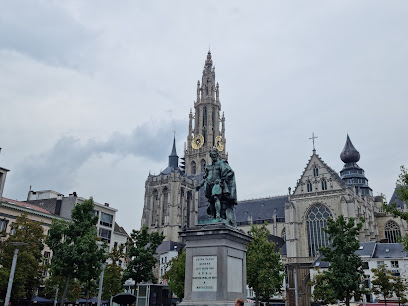
Het Steen
Step into history at Het Steen, Antwerp's medieval fortress, where captivating exhibitions and stunning river views await you.
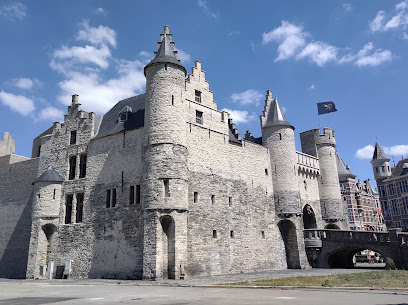
Brabo's Monument
Discover the stunning Brabo's Monument in Antwerp's Grote Markt, a masterpiece celebrating the city's rich history and artistic heritage.

Grote Markt - Large market
Discover the charm of Antwerp at Grote Markt, a historic plaza surrounded by stunning architecture and vibrant local culture.
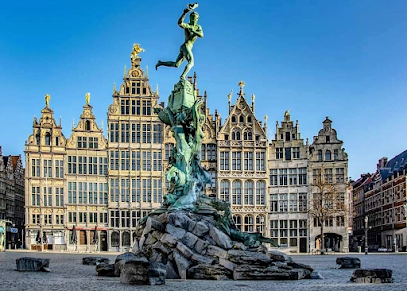
Groenplaats
Discover the charm of Groenplaats in Antwerp, a lively square rich in history, culture, and local flavors, perfect for tourists and locals alike.

De Ruien
Explore the enchanting canals of De Ruien, Antwerp's hidden waterways, revealing the city's rich history and stunning architecture.
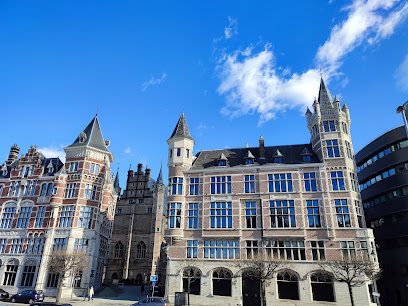
Antwerp City Hall
Discover the architectural splendor and rich history of Antwerp City Hall, a UNESCO World Heritage site in the heart of Antwerp's vibrant Grote Markt.
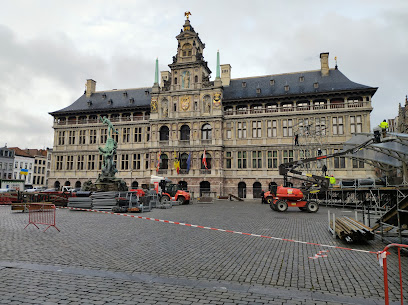
The oldest house of Antwerp
Discover the historical allure of Antwerp's oldest house, a stunning landmark that reveals the city's rich architectural heritage and cultural story.
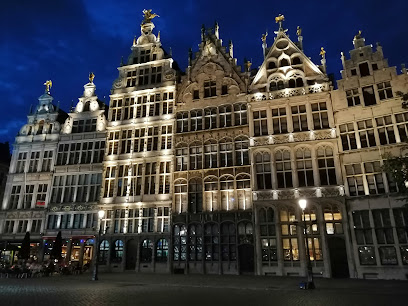
Anvers
Explore the vibrant charm of Anvers in Antwerp, a perfect blend of history, culture, and delightful dining experiences.
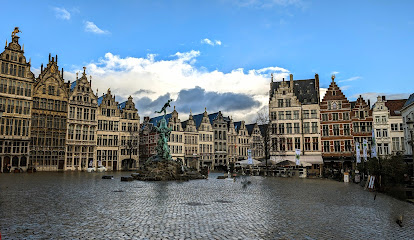
The Antwerp Story
Explore the fascinating history and culture of Antwerp at The Antwerp Story, an interactive museum that brings the city's past to life.
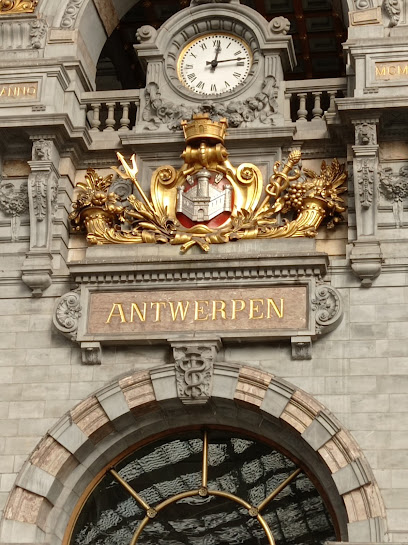
Unmissable attractions to see
Zoo Antwerpen
Explore the rich biodiversity and conservation efforts at Zoo Antwerpen, a historic zoo in the heart of Belgium's vibrant city.
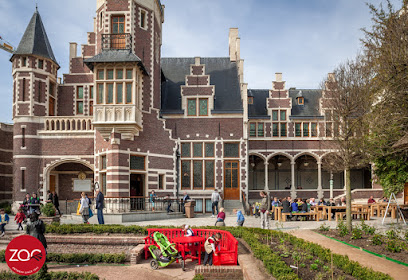
MAS - Museum aan de Stroom
Explore Antwerp's rich history and culture at MAS - Museum aan de Stroom, an architectural marvel offering stunning views and engaging exhibits.
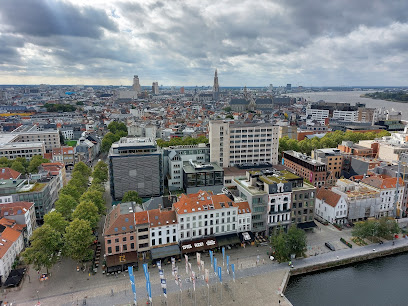
Cathedral of Our Lady
Discover the awe-inspiring Cathedral of Our Lady in Antwerp, a Gothic masterpiece rich with art and history, offering a glimpse into Belgium's cultural heritage.
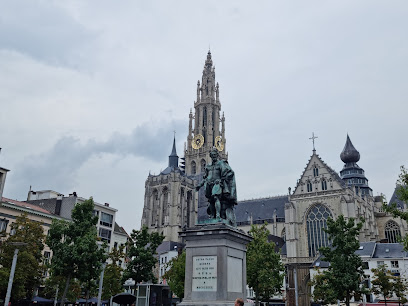
Het Steen
Explore Het Steen, Antwerp's historic fortress, and delve into the rich maritime history of this iconic landmark by the River Scheldt.
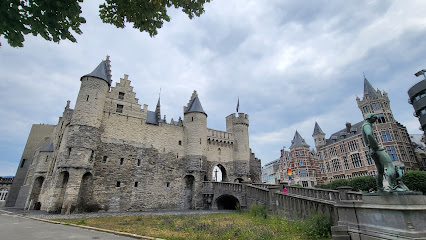
KMSKA - Royal Museum of Fine Arts Antwerp
Explore the Royal Museum of Fine Arts Antwerp, a cultural gem featuring masterpieces from Flemish and Dutch artists in a stunning architectural setting.
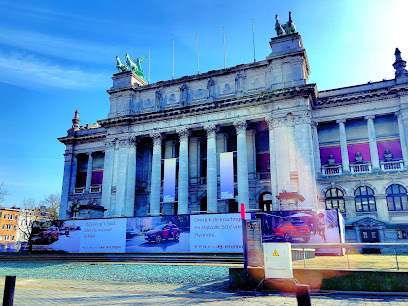
De Ruien
Explore Antwerp's hidden gem, De Ruien, an enchanting network of underground canals revealing the city's rich history and stunning architecture.
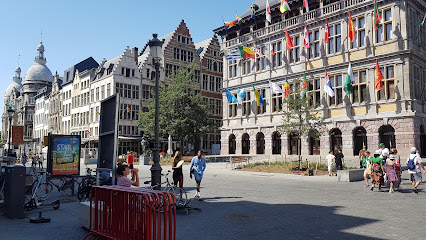
MoMu - Fashion Museum Antwerp
Explore the artistry of fashion at MoMu - Fashion Museum Antwerp, where heritage meets contemporary creativity in a stunning setting.

Steenplein
Experience the vibrant atmosphere of Steenplein, Antwerp's iconic square filled with culture, cafes, and stunning architecture.
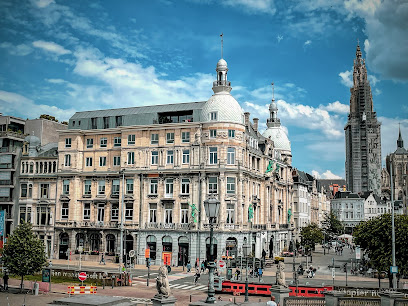
Antwerp Christmas Market
Experience the magic of the Antwerp Christmas Market, a festive hub of local crafts, delicious treats, and vibrant holiday cheer in Belgium.
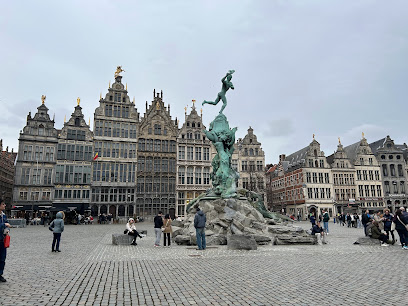
A for Antwerp Sign
Discover the vibrant A for Antwerp Sign, a must-see landmark capturing the essence of Antwerp's rich culture and stunning waterfront views.
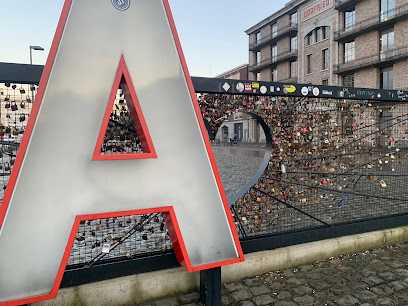
Antwerpen à la Carte
Discover Antwerp à la Carte, a vibrant culinary hub in the heart of Antwerp, offering diverse flavors and unforgettable dining experiences in a historic setting.
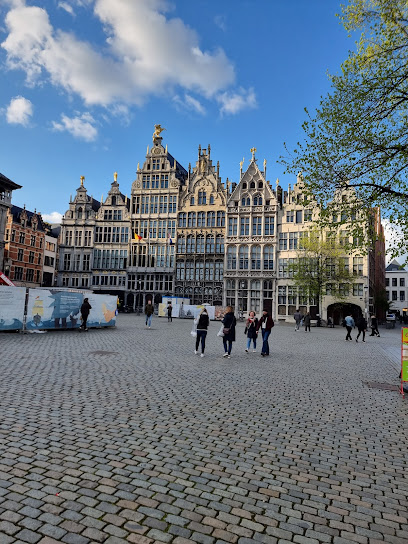
Touristram (tourist train through the center of Antwerp)
Uncover the charm of Antwerp aboard the Touristram, a delightful tourist train offering scenic views and rich historical insights.

Essential places to dine
Meat Factory
Experience the ultimate meat lover's paradise at Meat Factory in Antwerp - where flavor meets quality in every bite.
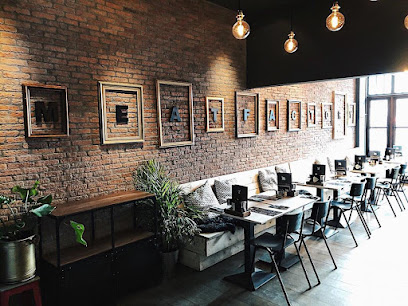
The Jane
Discover culinary artistry at The Jane in Antwerp – where modern Belgian cuisine meets breathtaking design.
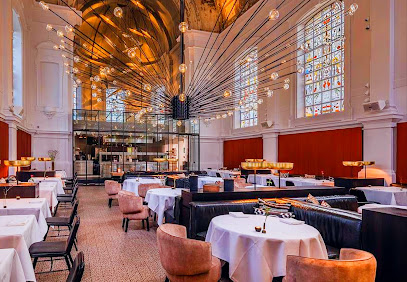
Bourla
Experience exquisite Belgian cuisine at Bourla in Antwerp - where tradition meets modernity in every delicious dish.
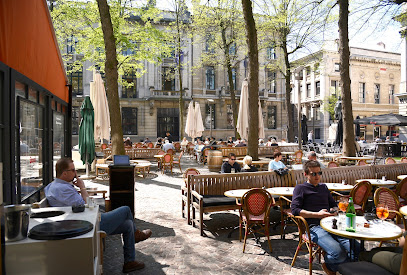
De Peerdestal | Restaurant Antwerpen
Discover exquisite Belgian and French cuisine at De Peerdestal in Antwerp – a must-visit for culinary enthusiasts.
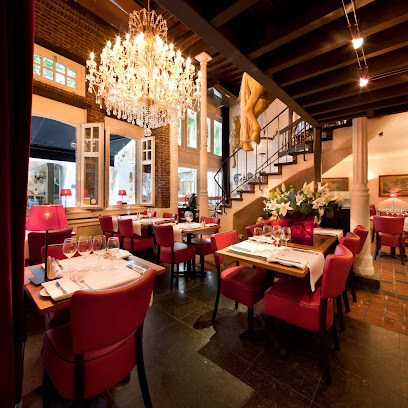
De Bomma
Experience authentic Belgian flavors at De Bomma in Antwerp—where traditional cuisine meets warm hospitality.
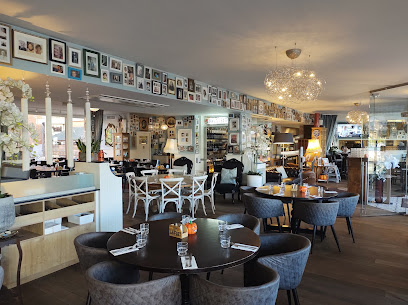
De Pottekijker
Experience authentic Belgian cuisine at De Pottekijker in Antwerp - where delicious grilled dishes meet cozy ambiance.

Sir Anthony Van Dijck
Experience the pinnacle of French cuisine at Sir Anthony Van Dijck in Antwerp—where elegance meets exceptional taste.
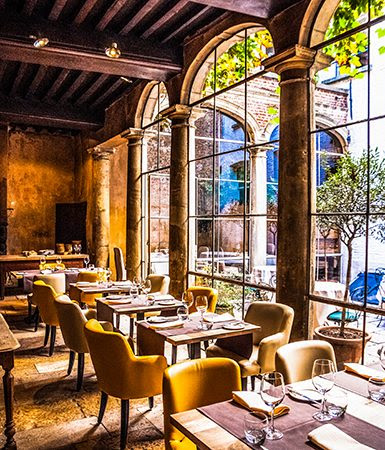
Zilte
Discover Zilte, Antwerp's premier fine dining destination renowned for its innovative vegetarian cuisine and breathtaking views.
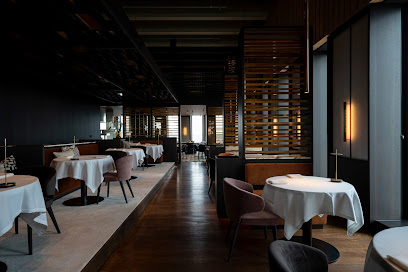
Restaurant Fons
Experience authentic Belgian cuisine at Restaurant Fons in Antwerp - where every dish tells a story.
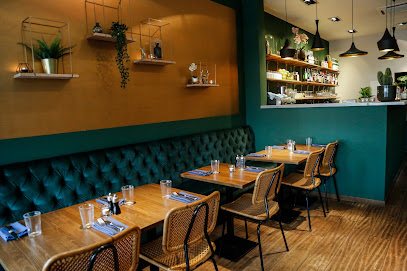
Fine Fleur
Discover culinary excellence at Fine Fleur in Antwerp – where every dish tells a story of flavor and artistry.

Markets, malls and hidden boutiques
Stadsfeestzaal
Discover the blend of history and modern shopping at Stadsfeestzaal, Antwerp's premier shopping mall with stunning architecture and vibrant atmosphere.
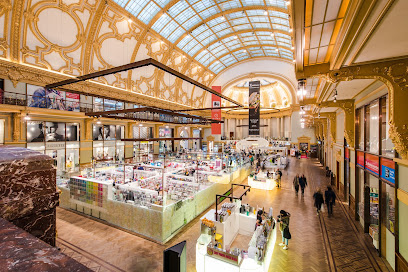
Jelly Jazz @ Grand Bazar
Explore Jelly Jazz @ Grand Bazar for unique gifts, local crafts, and maps that capture the spirit of Antwerp's vibrant culture.
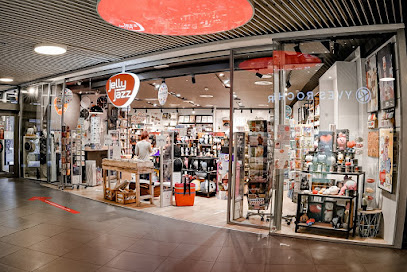
Urban Outfitters
Discover unique gifts and trendy styles at Urban Outfitters in Antwerp, where fashion meets eclectic home decor.
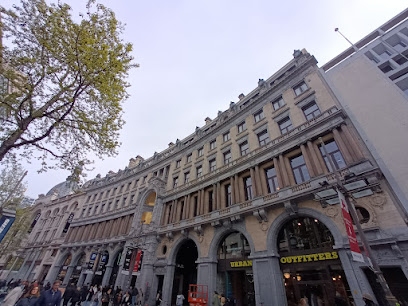
The Other Shop
Discover literary treasures at The Other Shop in Antwerp, a unique bookstore offering an eclectic mix of books and gifts in a cozy atmosphere.
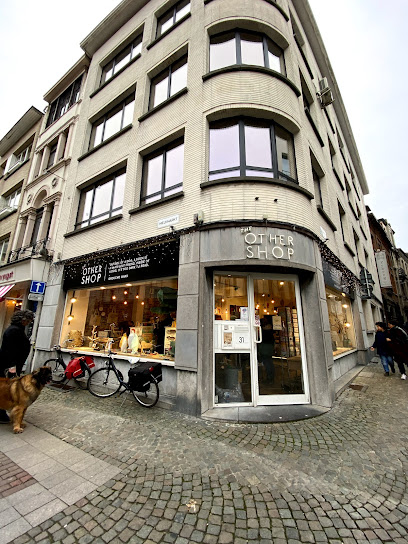
MOOSE in the CITY
Explore MOOSE in the CITY: Where Nordic fashion meets Belgian charm in a delightful shopping experience filled with style and creativity.
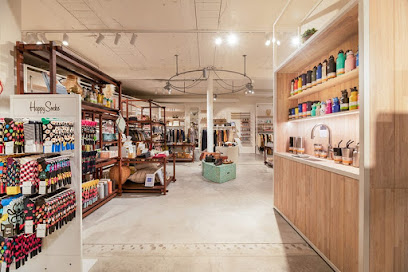
State of Art Store Antwerpen
Discover the essence of men's fashion at State of Art Store Antwerpen, where modern style meets timeless elegance.
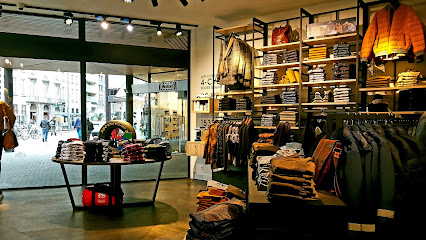
Central Souvenir
Discover unique Belgian gifts at Central Souvenir in Antwerp, where local craftsmanship meets friendly service for the perfect travel memento.
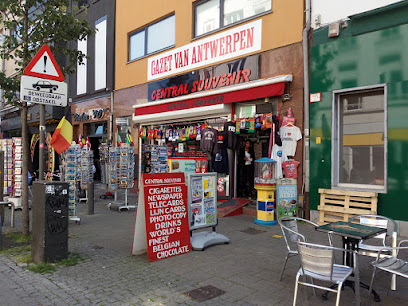
MAS shop
Explore the MAS Shop in Antwerp: A treasure trove of local crafts and unique souvenirs capturing the city's vibrant culture.
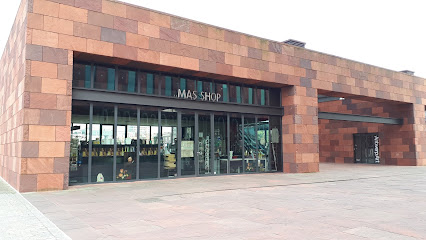
Antwerps Kantwinkeltje
Discover unique gifts and handcrafted treasures at Antwerps Kantwinkeltje, a charming shop in the heart of Antwerp, Belgium.
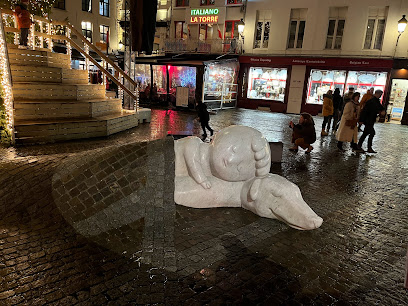
Belgian Heritage
Uncover authentic Belgian souvenirs and cultural treasures at Belgian Heritage, the perfect stop for any traveler in Antwerp.
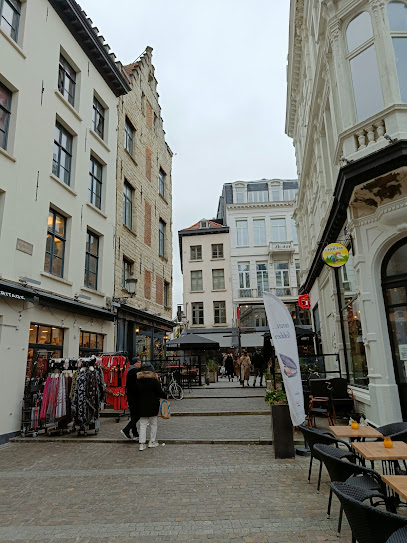
Essential bars & hidden hideouts
Dogma
Discover the art of mixology at Dogma, Antwerp's premier cocktail bar, where innovative drinks and vibrant atmosphere await.
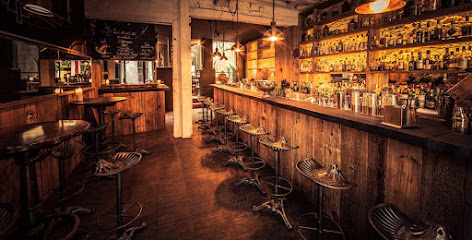
Parisien Antwerp Bar & Lounge - Antwerpen
Discover the chic atmosphere of Parisien Antwerp Bar & Lounge, where expertly crafted cocktails meet the vibrant nightlife of Antwerp.
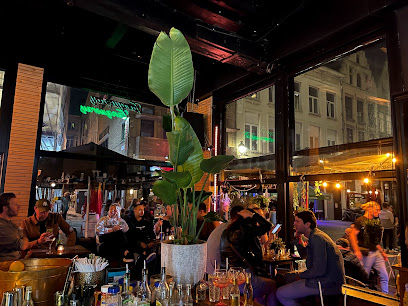
BAR BASIL
Experience the vibrant atmosphere and exquisite drinks at Bar Basil, Antwerp's go-to spot for cocktails, coffee, and camaraderie.
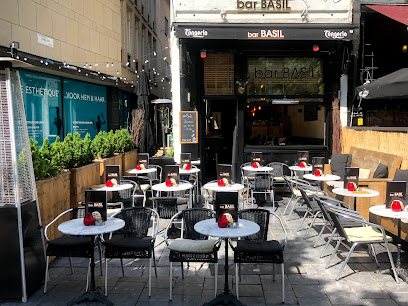
bar Deco
Experience the vibrant nightlife and local flavors at Bar Deco, a beloved bar and café in the heart of Antwerp.
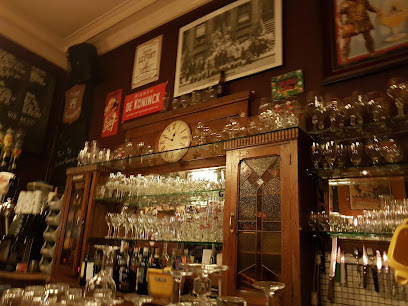
De Vuile Was
Experience the vibrant nightlife of Antwerp at De Vuile Was, where delightful cocktails meet pulsating dance beats in a stylish setting.
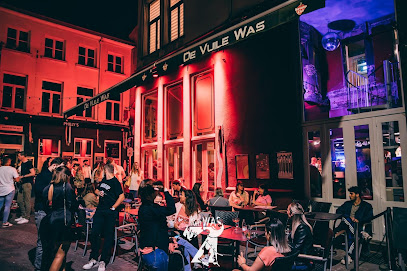
Ernst Pub
Experience the vibrant atmosphere of Ernst Pub in Antwerp, a delightful destination for beer and wine lovers seeking local flavors and camaraderie.
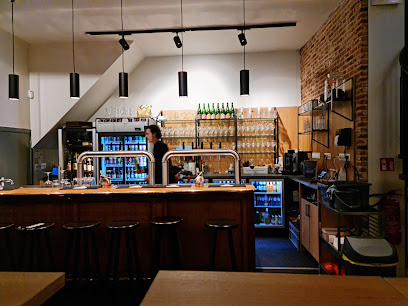
Bar 11 - Antwerpen
Discover the lively bar scene at Bar 11 in Antwerp, where great drinks and a vibrant atmosphere await every visitor.
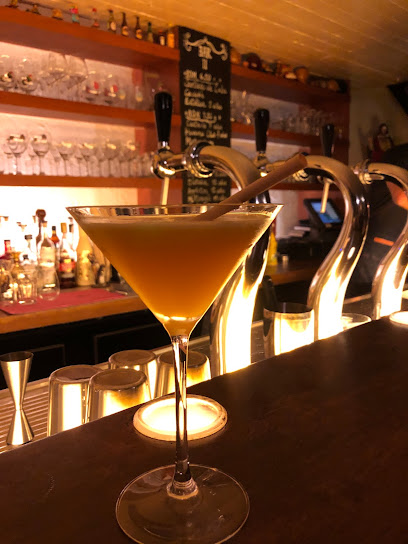
BAR PATRON
Experience Antwerp's vibrant nightlife at Bar Patron, where every night is a celebration of good drinks and great company.
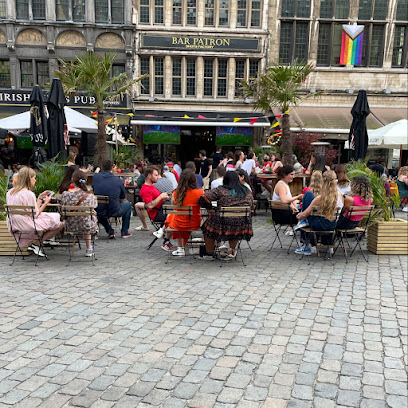
BARRO Antwerp - Antwerpen
Experience the vibrant nightlife of Antwerp at BARRO, where unique cocktails meet live music for an unforgettable evening.
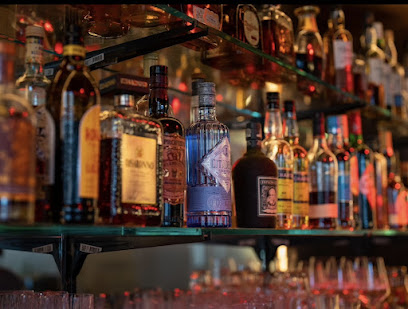
Cut bar female safe space bar - Antwerpen
Discover Cut Bar in Antwerp, a vibrant and inclusive bar offering creative cocktails and a welcoming atmosphere for everyone.
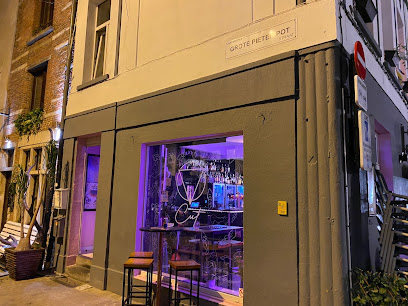
Local Phrases
-
- HelloHallo
[ha-lo] - GoodbyeTot ziens
[tot zeens] - YesJa
[ya] - NoNee
[nee] - Please/You're welcomeAlsjeblieft
[als-ye-bleeft] - Thank youDank je
[dank ye] - Excuse me/SorrySorry
[sor-ee] - How are you?Hoe gaat het?
[hoo gat het] - Fine. And you?Goed. En met jou?
[khoot. en met yow] - Do you speak English?Spreekt u Engels?
[spreekt u en-gels] - I don't understandIk begrijp het niet
[ik buh-grayp het neet]
- HelloHallo
-
- I'd like to see the menu, pleaseMag ik de menukaart zien, alstublieft
[mag ik de menoo-kart seen, al-stu-bleeft] - I don't eat meatIk eet geen vlees
[ik ayt khayn vleys] - Cheers!Proost!
[prost] - I would like to pay, pleaseIk wil graag betalen, alstublieft
[ik vil khraag buh-talen, al-stu-bleeft]
- I'd like to see the menu, pleaseMag ik de menukaart zien, alstublieft
-
- Help!Help!
[help] - Go away!Ga weg!
[ga vekh] - Call the Police!Bel de politie!
[bel duh po-lee-see] - Call a doctor!Bel een dokter!
[bel ayn dok-ter] - I'm lostIk ben verdwaald
[ik ben ver-dwahld] - I'm illIk ben ziek
[ik ben zik]
- Help!Help!
-
- I'd like to buy...Ik wil graag kopen...
[ik vil khraag koh-pen] - I'm just lookingIk kijk alleen maar
[ik kayk al-leyn mar] - How much is it?Hoeveel kost het?
[hoo-veyl kost het] - That's too expensiveDat is te duur
[dat is tuh dur] - Can you lower the price?Kunt u de prijs verlagen?
[kunt u duh preys ver-lah-ghen]
- I'd like to buy...Ik wil graag kopen...
-
- What time is it?Hoe laat is het?
[hoo laht is het] - It's one o'clockHet is een uur
[het is ayn ohr] - Half past (10)Half elf
[half elf] - MorningOchtend
[okh-tend] - AfternoonMiddag
[mid-dahkh] - EveningAvond
[ah-vohnd] - YesterdayGisteren
[khis-teh-ren] - TodayVandaag
[vahn-dahkh] - TomorrowMorgen
[mor-khen] - 1Een
[ayn] - 2Twee
[twey] - 3Drie
[dree] - 4Vier
[veer] - 5Vijf
[vayf] - 6Zes
[zehs] - 7Zeven
[zeh-ven] - 8Acht
[akht] - 9Negen
[nay-khen] - 10Tien
[teen]
- What time is it?Hoe laat is het?
-
- Where's a/the...?Waar is een/de...?
[var is ayn/de] - What's the address?Wat is het adres?
[vat is het ah-dres] - Can you show me (on the map)?Kunt u mij laten zien (op de kaart)?
[kunt u may la-ten seen (op de kaart)] - When's the next (bus)?Wanneer is de volgende (bus)?
[ven-er is de vol-hen-de (bus)] - A ticket (to ....)Een kaartje (naar ....)
[ayn khaart-ye (nar)]
- Where's a/the...?Waar is een/de...?
History of Antwerp City Center
-
The history of Antwerp City Center can be traced back to the Roman period when it was known as 'Antverpia.' This name is believed to come from the legend of a giant who was defeated by the hero Brabo, who then threw the giant's hand into the river Scheldt. By the 4th century, Antwerp had evolved into a significant trading post due to its strategic location along the river.
-
During the late Middle Ages, particularly in the 16th century, Antwerp emerged as one of Europe's principal trading cities. The establishment of the Antwerp Bourse in 1531 marked the beginning of modern stock exchanges, attracting merchants from across Europe and establishing the city as a financial hub.
-
The 16th century is often referred to as the 'Golden Age' of Antwerp. The city became a cultural epicenter, home to notable artists such as Peter Paul Rubens. The Cathedral of Our Lady, a UNESCO World Heritage Site, was completed during this period and showcases the city's wealth and artistic achievements.
-
The Spanish occupation in the late 16th century brought about significant turmoil, including the siege of Antwerp in 1584. This event marked the beginning of a decline in the city’s economic prominence as many merchants fled, leading to a loss of population and influence.
-
The 19th century saw a resurgence in Antwerp's development, spurred by the Industrial Revolution. The construction of docks and railways transformed the city into a major port, facilitating trade and commerce. The Antwerp Harbor became one of the largest in the world, further solidifying the city's economic importance.
-
Antwerp suffered considerable damage during both World Wars, particularly in World War II. Following the conflicts, extensive reconstruction efforts were undertaken, leading to modernization of the city center while preserving its historical architecture, including the restoration of the Cathedral of Our Lady.
-
Today, Antwerp City Center is a vibrant blend of historical and modern influences. It is recognized for its fashion district, diamond trade, and multicultural community. Events such as the Antwerp Fashion Week and the city's many festivals reflect its dynamic culture and ongoing evolution as a European city.
Antwerp City Center Essentials
-
Antwerp City Center is easily accessible from other neighborhoods in Antwerp. You can take the local tram services, such as tram line 2 or 3, which connect various neighborhoods to the city center. The central train station, Antwerpen-Centraal, offers trains from major cities in Belgium and neighboring countries, making it a convenient entry point. Buses also operate frequently, with several lines stopping at key locations in the city center.
-
Antwerp City Center is pedestrian-friendly, allowing you to explore its attractions on foot. For longer distances, public transport options like trams and buses are efficient. The city also has a bike-sharing system, allowing you to rent bicycles for easy navigation. Taxis and ride-sharing services are available for more direct routes, while electric scooters can be found throughout the city.
-
Antwerp City Center is generally safe for tourists, but it’s important to remain vigilant. Areas around the central station can be busy and may attract petty crime such as pickpocketing. Avoid walking alone at night in dimly lit streets, especially in less busy areas. Always keep an eye on your belongings in crowded places.
-
In case of emergency, dial 112 for police, fire, or medical assistance. The local hospital, Universitair Ziekenhuis Antwerpen, is equipped to handle emergencies. It is advisable to have travel insurance that covers medical expenses. For minor health issues, pharmacies are widely available throughout the city.
-
Fashion: Do dress comfortably but smartly; avoid overly casual wear in upscale restaurants. Religion: Do respect local customs, especially when visiting churches; cover your shoulders and knees. Public Transport: Do validate your ticket before boarding; don’t occupy seats meant for the elderly or disabled. Greetings: Do greet locals with a handshake; don't assume familiarity too quickly. Eating & Drinking: Do try local specialties like waffles and beer; don’t eat while walking, as it's considered impolite.
-
To experience Antwerp City Center like a local, visit the 'Meir' for shopping and enjoy a coffee at a nearby café. Explore hidden gems in the neighborhood, such as the cozy alleys and local boutiques away from the main tourist spots. Join locals for the evening 'apero' at bars, where you can enjoy drinks and small bites. Be sure to check out local events or markets that may be happening during your visit for a truly authentic experience.
Nearby Cities to Antwerp City Center
-
Things To Do in Mechelen
-
Things To Do in Aalst
-
Things To Do in Brussels
-
Things To Do in Leuven
-
Things To Do in Ghent
-
Things To Do in Louvain-la-Neuve
-
Things To Do in Hasselt
-
Things To Do in Eindhoven
-
Things To Do in Rotterdam
-
Things To Do in Knokke-Heist
-
Things To Do in Genk
-
Things To Do in Bruges
-
Things To Do in Zeebrugge
-
Things To Do in Delft
-
Things To Do in Namur













